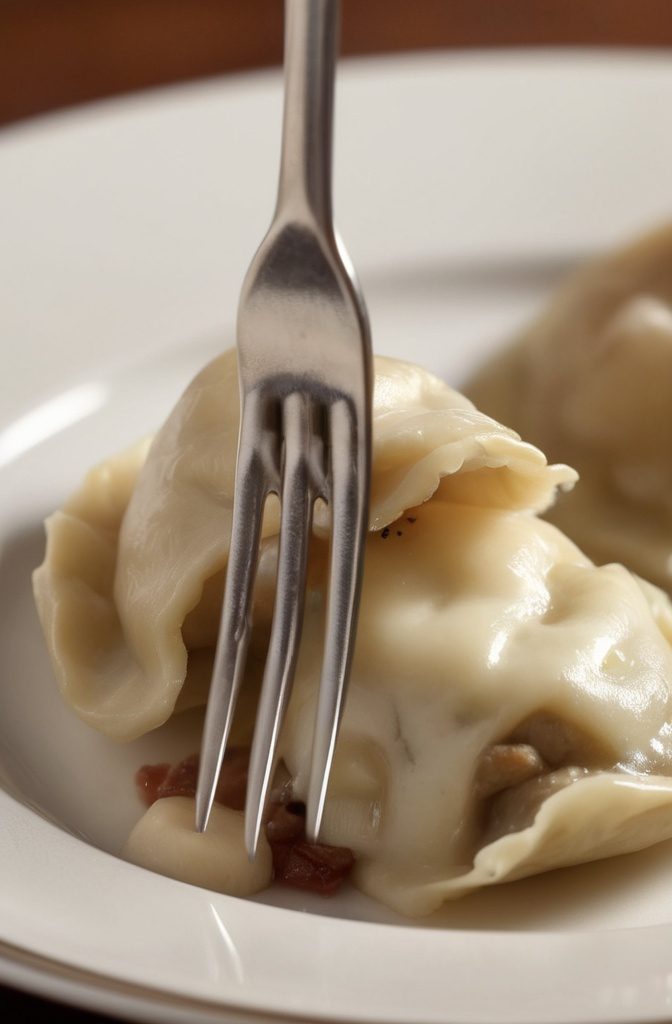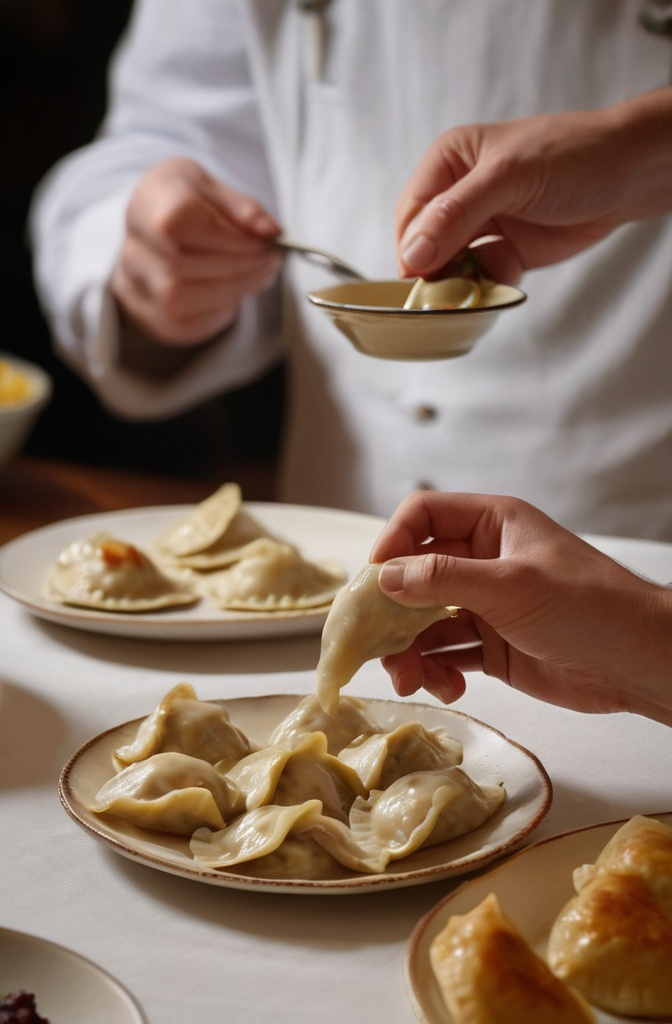You don’t just make pierogi. You live them. If you’re tossing flour and kneading dough without at least a pinch of reverence, you’re already doing it wrong. Pierogi—those humble-looking dumplings from Central and Eastern Europe—are not merely food. They’re memory carriers. They’re edible nostalgia. They’re a flavor-stuffed time machine back to your babcia’s (grandmother’s) kitchen, even if your babcia was Italian or didn’t exist at all.
This article isn’t for the casual cook tossing frozen pierogi into boiling water like it’s a late-night dorm snack. Nope. This is for chefs, culinary pros, and artisans who know that behind every rustic dish lies centuries of innovation, regional pride, and the subtle flex of perfect dough-to-filling ratio. We’re diving into what makes pierogi not just beloved, but essential to the modern chef’s repertoire.
What Actually Is a Pierogi?
It’s a dumpling, sure, but it’s also not just any dumpling. Pierogi are semicircular, crescent-shaped pockets of unleavened dough, traditionally boiled, sometimes pan-fried post-boil, always handmade (at least if you’re doing it right). The name “pierogi” is plural. Singular? That’d be pieróg, though hardly anyone ever eats just one so that word’s near extinct in kitchens.
Originating from Poland but spread across Eastern Europe with cousins in Ukraine (varenyky), Slovakia (pirohy), and even Russia (pelmeni – not exactly the same, but same passport), pierogi have become a culinary ambassador of Slavic culture. Though, calling them strictly Slavic is like saying ravioli only belong in Tuscany. Migration, war, poverty, and celebration all smuggled pierogi into new countries and kitchens.
Dough First, Always
Forget the filling for a sec. If your dough’s trash, so is your pierogi. It should be elastic but not rubbery, tender yet durable enough to hold a dollop of sauerkraut or mashed potato without tearing like wet paper. Classic dough’s simple: flour, warm water, egg, a touch of salt, and sometimes sour cream for tenderness.
But chefs are riffing. Some modern kitchens swap in semolina for a bit more bite. Others experiment with chickpea flour, especially in vegan or gluten-free operations. Here’s a tip most textbooks skip: Rest your dough. Minimum 30 minutes. Gluten needs to chill so you can roll it out without it snapping back like a resistance band.
Fillings: Tradition Meets Innovation
You know the classics. Mashed potato and cheese (often farmer’s cheese or twaróg), sauerkraut and mushroom, ground meat, or sweet fillings like plum or blueberry. But innovation’s sneaking into these starch-filled sanctuaries.
Chef Marta Kisielewska of Kraków’s Pierogarnia Stary Młyn has introduced pierogi stuffed with goat cheese and beetroot, drizzled with walnut oil—basically a dumpling in a hipster bistro disguise. Others go full fusion: kimchi and pork belly pierogi, or pierogi with buffalo mozzarella and sun-dried tomatoes.
Plant-based fillings are booming too. Data from the Polish Food Trends 2024 report showed a 37% rise in plant-based pierogi sales in urban centers like Warsaw and Wrocław. The takeaway? Consumers want nostalgia and novelty. Give ’em both.
The Boil-Fry Debate
Boiling is sacred. If you’re skipping it, you’re skipping a century of muscle memory passed down in whispers. But frying? That’s the devil’s crisp… and also, kinda heavenly.
Most purists boil pierogi until they float—roughly 3–5 minutes. Some chefs fry them in butter afterward for that golden blistered edge. There’s no hard rule here, but if you only fry ’em, you’re not letting the dough fully hydrate. The inside stays chewy. Kinda like undercooked pasta, but worse because it’s doughier.
Want the pro tip? Boil, dry for a few seconds on parchment, then fry in brown butter with shallots or bacon. Serve with sour cream or crème fraîche, and don’t apologize for the calories.

Regional Styles That Matter
Polish pierogi are the most internationally recognized, but don’t sleep on regional variants:
- Ukraine: Varenyky often use tangier fillings—think cherry or sour plum, served with sweet cream.
- Slovakia: Bryndzové pirohy are filled with bryndza (a funky sheep cheese) and topped with crisp bacon bits.
- Lithuania: Koldūnai tend to be smaller and more delicate, often in broth.
- Hungary: Derelye are the distant cousins—sweet, poppyseed-heavy, sometimes served as dessert.
There’s also uszka, “little ears,” served in beetroot borscht during Christmas Eve dinner in Poland. They’re pierogi’s elegant, fussy cousins—delicate, finicky, and worth the hassle.
Modern Production & Automation
The industrialization of pierogi has birthed an entire economy. According to a 2023 market analysis by Euromonitor, Poland alone exports over 30,000 tonnes of frozen pierogi annually, primarily to Germany, the U.S., and the UK. There’s a reason even big-name chefs are designing their own frozen pierogi lines.
Machines like the ANKO HLT series allow for large-scale production without compromising dough integrity, but it’s a delicate balance. Filling consistency, dough elasticity, and sealing pressure have to be calibrated with obsessive precision. One air bubble inside a pieróg during freezing and the whole batch can burst during cooking.
Pierogi in Fine Dining?
Absolutely. Forget the peasant-food tag. Pierogi have marched into Michelin-starred menus.
Chef Wojciech Modest Amaro (Atelier Amaro, Warsaw) famously served pierogi filled with smoked eel, topped with dill oil and powdered vinegar. It’s not grandma’s kitchen anymore. In New York, chefs like Piotr Szydzik are plating up truffle-and-caviar-stuffed pierogi on ceramic slabs with microgreens. Is it overkill? Maybe. But it sells. And it elevates.
There’s a powerful lesson here: comfort food can be reimagined without losing its roots. You just need technique, respect, and guts.
Nutritional Reality Check
No, pierogi aren’t health food. But let’s be real—neither is half the haute cuisine menu. Still, chefs can lighten them up. Use whole wheat flour. Swap cream cheese for silken tofu in sweet pierogi. Roast fillings instead of frying. Stuff them with lentils and quinoa if you must (just… maybe don’t tell your Polish grandmother).
One standard potato-and-cheese pieróg clocks in at about 200–250 calories depending on its size and whether it’s pan-fried. But again, we’re not here for diets. We’re here for depth, flavor, texture, soul.
Common Mistakes Even Pros Make
- Overfilling – Sounds tempting, right? More filling = better? Nope. You’ll just end up with exploded dumplings in the pot.
- Skipping the dough rest – Huge rookie mistake. Gluten needs to relax or your dough will fight you like a stubborn mule.
- Filling too wet – This is a sneaky one. Wet fillings = soggy dough = pierogi heartbreak. Drain your sauerkraut, mash your potatoes dry.
- Freezing wrong – Never freeze fresh pierogi touching. They’ll stick like clingy exes. Freeze them spaced out on a tray first, then bag.

The Business of Pierogi
Running a pierogi-centric operation? You’re not alone. In 2024, pierogi-themed restaurants saw a 19% rise in major urban areas like Chicago, Berlin, and Toronto. It’s comfort food. It’s Instagrammable. It’s a vessel for global flavors. What’s not to love?
But beware: labor costs can destroy your margin. Hand-folding pierogi is artisanal, yes—but it’s also time-consuming. Consider hybrid models: hand-make your signature varieties and use machines for the everyday offerings.
Cultural Misconceptions
Let’s be clear: pierogi are not ravioli. They’re not gyoza. They’re not empanadas. Every culture’s got dumplings, but pierogi carry a specific set of cultural cues and culinary expectations. Treat them with the dignity they deserve. And please, for the love of butter, don’t pronounce the “g.” It’s “pea-roh-gee,” soft and gentle like the dish itself.
Final Thoughts: So Why Do Pierogi Matter?
Because they remind us that food doesn’t need to be fancy to be sacred. They connect people. They travel across oceans, through wars, over dinner tables and across Michelin-starred plates. They’re filled with more than just ingredients—they’re stuffed with meaning.
For the pro chef, they offer a blank canvas. A chance to blend tradition with daring innovation. A dish to build a business around. A menu staple that plays both comfort and couture.
So go ahead. Flour your counter. Roll the dough. Try something bold with the filling. Just remember: you’re not just making food. You’re making history, one dumpling at a time.
FAQs
What is the origin of pierogi?
Pierogi originated in Poland but have roots and variations across Eastern and Central Europe.
What are pierogi made of?
They consist of unleavened dough filled with savory or sweet fillings like potato, cheese, or fruit.
Is “pierogi” singular or plural?
“Pierogi” is plural; the singular form is “pieróg,” though it’s rarely used.
What’s the secret to perfect pierogi dough?
Use high-quality flour, rest the dough for 30 minutes, and keep it soft but elastic.
Should pierogi be boiled or fried?
Traditionally boiled first; pan-frying afterward is optional but adds a crispy texture.
Can pierogi be made vegan or gluten-free?
Yes, with alternative flours and plant-based fillings like lentils or mushrooms.
How do you stop pierogi from bursting during cooking?
Avoid overfilling, seal tightly, and ensure fillings aren’t too wet.
Can pierogi be frozen?
Yes, freeze them uncooked on trays first, then bag to avoid sticking.
Are pierogi healthy?
They’re more comfort food than health food, but lighter versions can be made.
Are pierogi the same as dumplings from other cultures?
No, they’re unique in technique, texture, and cultural context despite similarities.
Can pierogi be used in fine dining?
Absolutely—modern chefs are incorporating high-end ingredients and creative plating.
How do you pronounce pierogi?
It’s “pea-roh-gee,” soft “g,” and never with a hard “g” sound.
What are common pierogi fillings?
Potato and cheese, sauerkraut and mushroom, ground meat, fruits like blueberry.
How long do you boil pierogi?
Boil until they float—usually about 3–5 minutes.
What’s the best way to serve pierogi?
With sour cream, caramelized onions, or browned butter for maximum flavor.

Mariana is a passionate home cook who creates delicious, easy-to-follow recipes for busy people. From energizing breakfasts to satisfying dinners and indulgent desserts, her dishes are designed to fuel both your body and hustle.
When she’s not in the kitchen, she’s exploring new flavors and dreaming up her next recipe to share with the Foodie Hustle community.

